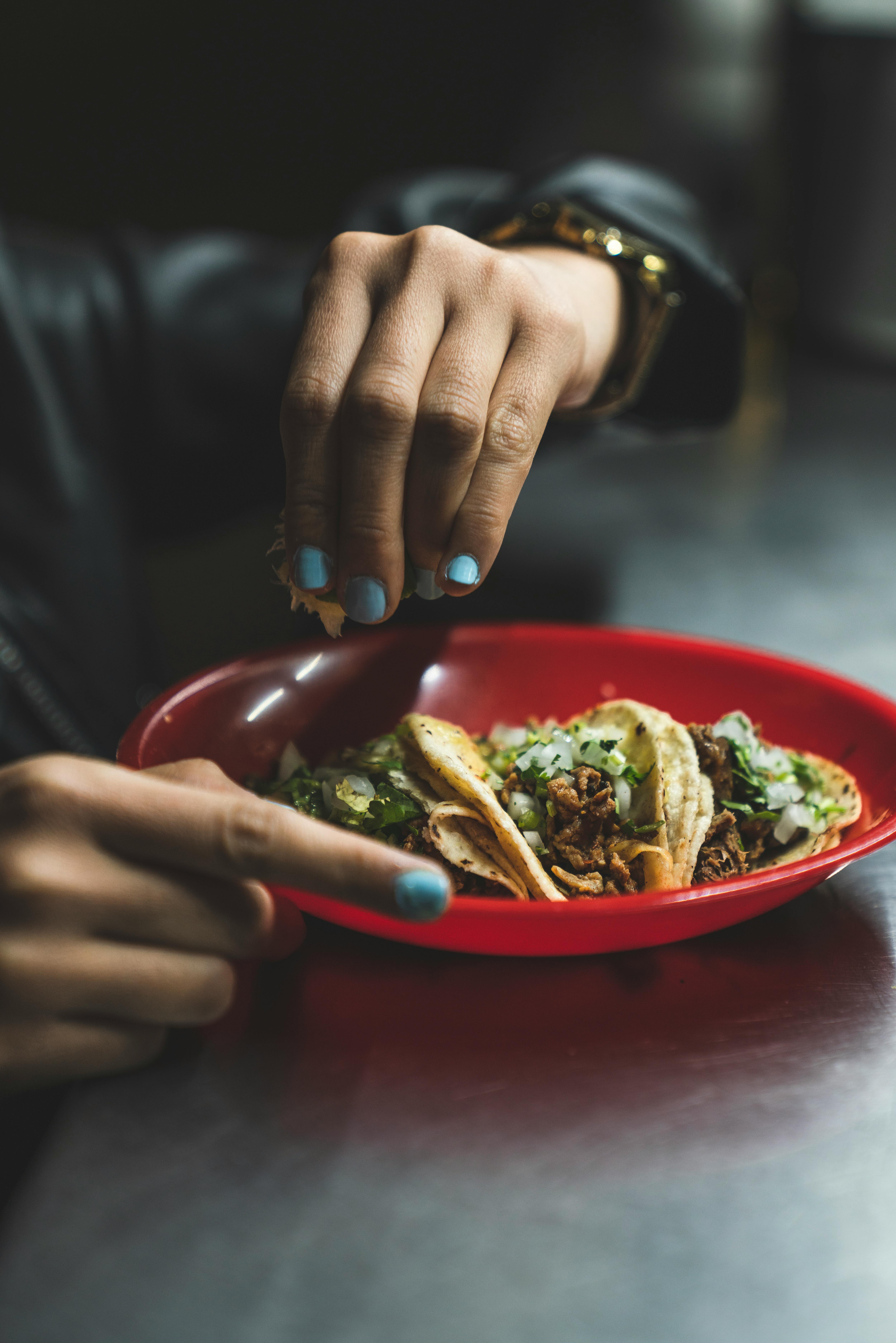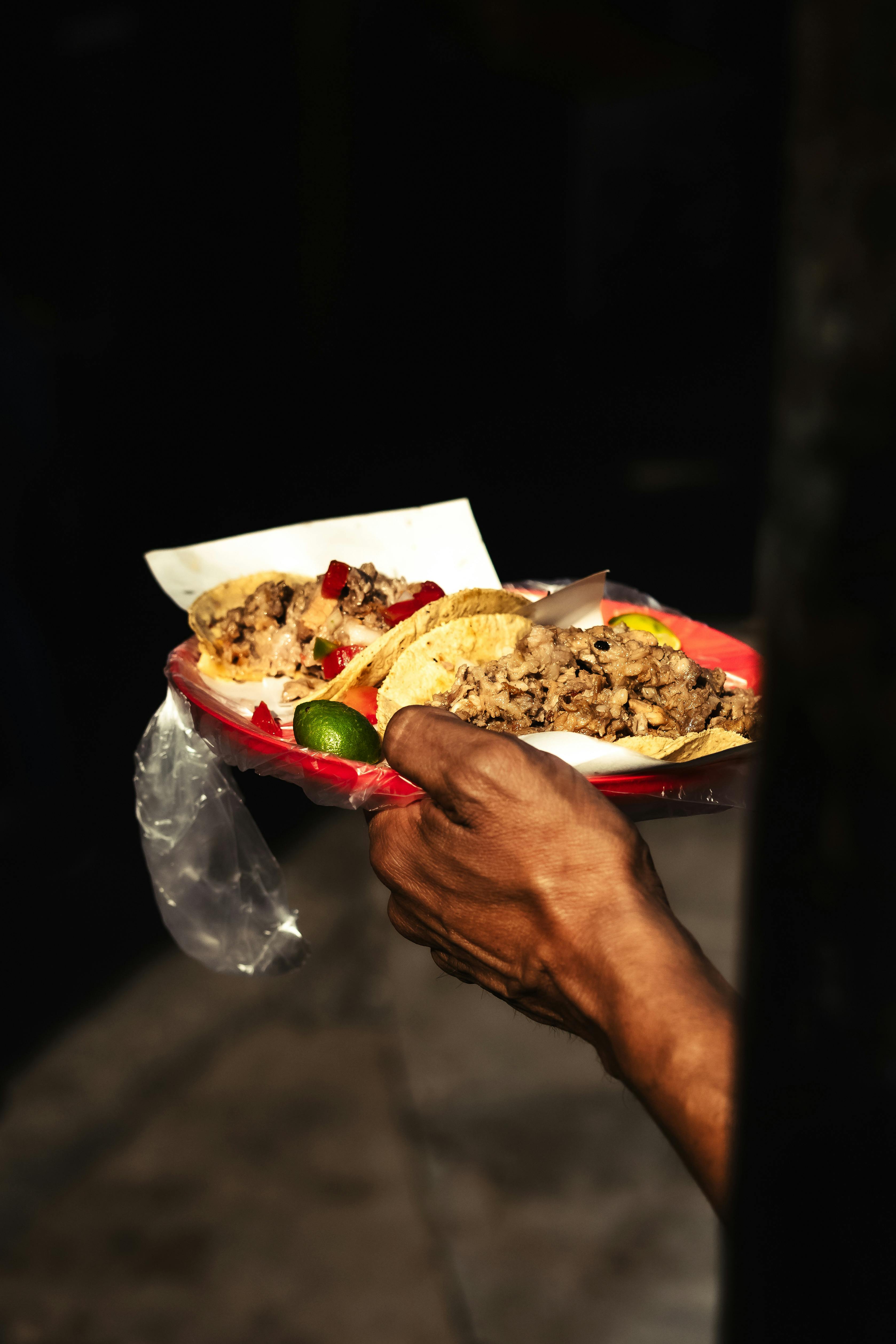Mexican Tacos Unwrapped: The Ultimate Guide to Authentic Taco Culture
There’s a certain magic in the first bite of a real Mexican taco—a combination of sizzling meat, fragrant masa, a punchy salsa, and that earthy, slightly smoky aroma wafting from the tortilla. Back when I first started exploring Mexican cuisine, I thought I understood tacos. Tex-Mex ground beef, crunchy shells—sound familiar? Honestly, what I was eating was barely scratching the surface. If you’ve only tried what’s served up in fast-casual joints north of the border, or made tacos by dumping pre-packaged seasoning on some supermarket beef, you’re missing out on an entire universe of flavor, texture, and tradition.1
The world of Mexican tacos is incredibly diverse—not just in fillings, but in tortillas, condiments, regional variations, and even etiquette. This guide aims to take you beyond surface-level recipes. We’ll dig deep into cultural context, practical skills, and real personal discoveries from my years of culinary exploration.
What Is a Mexican Taco? Origins, Definitions & Misconceptions
Let’s start at the most basic level: What is a taco—really? If you ask ten people, you’ll probably get at least seven wildly different answers, especially if you include opinions from folks outside and inside Mexico. The classic, dictionary-style answer is simple: a taco is a pliable tortilla, most often corn (but sometimes flour—let’s clarify when and why in a bit), wrapped around a filling. But trust me, that’s like saying a symphony is “music played by an orchestra”—technically true but immensely reductive.2
“A taco’s beauty lies in its simplicity and adaptability. It can be street food, fine dining, or a home-cooked meal—a form, not a recipe.”
Here’s an insight I learned the hard way: tacos are first and foremost about the tortilla, not the filling. If you start with cheap, dry, flavorless tortillas, no amount of premium steak or heirloom salsa will save you. I’ve watched abuelas in Oaxaca toss aside picture-perfect carnitas if the tortilla was cold. Authentic Mexican tacos—the kind actually eaten across Mexico—are humble, handheld, and eaten immediately. There are no “crunchy taco shells” in the streets of Mexico City. Sorry, but you’re not going to find shredded iceberg lettuce piled inside a taco next to grilled fish on the Malecón in Puerto Vallarta.
Mexico is home to around 64 varieties of native maize (corn)3. This genetic diversity shapes the flavors and texture of tortillas, and by extension, the very soul of the taco. If you’ve never tasted a tortilla made from fresh, locally ground masa, you haven’t really tasted a “real” taco.
Taco history is a bit of a moving target. Early Indigenous peoples wrapped pre-Hispanic ingredients in corn tortillas. When the Spanish arrived, new fillings (think pork, beef, and cheese) appeared, but the “taco” as we know it—quick, portable, endlessly variable—only really flourished with Mexico’s post-colonial urbanization. In fact, the first known mention of the word “taco” in a culinary sense comes from late-19th-century Mexico City mining communities, where dynamite “tacos” wrapped in paper were used to blast rock (mind-blowing, right?)4. Even now, the terminology war continues: Is a taco with a flour tortilla “authentic”? Is a taco without salsa a sandwich?
If you’re judging a taquería, ignore the Instagram-trendy fillings for a second. Try their basic taco de carnitas or even a taco de sal (a hot, fresh tortilla sprinkled simply with salt). That’s where their skill—and the quality of their tortillas—really shows.
Regional Taco Culture: Why Place Matters So Much
I used to think “a taco’s a taco”—until I spent a week in Puebla, then trekked through Sinaloa, and found myself re-learning everything I thought I knew, city by city. Mexico’s geography—deserts, coasts, highlands, rainforests—shapes taco culture in ways most outsiders can’t fathom. It’s incredible. Regions don’t just have signature fillings; they source different corn, use different tortillas, create unique salsas, and even develop their own taco etiquette.
- Mexico City: Often considers itself the taco capital. Expect tacos al pastor, suadero, and tripa sold from carts until 2 a.m., washed down with a cold “refresco.”
- Puebla: Birthplace of the “taco árabe,” involving spit-roasted pork and a wheat “tortilla árabe,” a brilliant mashup with Middle Eastern roots.5
- Baja California: World-famous for fish tacos—grilled or battered, always with bright cabbage slaw and creamy sauce.
- The Yucatán: Look for cochinita pibil, slow-cooked pork with earthy achiote and punchy pickled onions.
- Sonora: Land of the extra-large, pillowy flour tortilla, nearly as prized as the beef inside.
Each region adapts not only to what’s available, but also to shifting waves of migration, trade, and even pop culture trends. Tacos norteños aren’t “better” than tacos sureños—they’re just…different. And, in my experience, the best taco of your life will probably be one you’ve never even heard about until you stumble onto a ratty roadside stand around midnight.
Why do so many people equate “authentic” only with Mexico City street tacos? Is that a real benchmark—or just marketing?
Essential Taco Components: Tortillas, Fillings & Salsas
If you’re serious about leveling up your taco game (at home or in your travels), you need to master three elements—the tortilla, the filling, and the salsa. Here’s what I should have mentioned first: You can improvise a taco with just about anything, but if one of these components is sub-par, the whole thing falls apart…sometimes literally.
Tortilla: The Unsung Hero
So, what makes a great tortilla? It starts—and, in Mexico, often ends—with good corn masa. You don’t have to nixtamalize corn at home (though I do, occasionally, in a fit of culinary ambition), but seek out tortillas made from real masa rather than commercial “masa harina” where possible. Corn tortillas are the rule everywhere except in the northern states—think Sonora—where soft flour tortillas reign, owing to centuries of wheat farming.
“You can have the fanciest filling, but if your tortilla is store-bought and cold, it isn’t a Mexican taco. Tortilla is the soul.”
- Heat tortillas just before serving, ideally over a dry comal or skillet.
- Never refrigerate tortillas you plan to eat the same day—wrap in a towel to keep soft.
- Never double up on tortillas unless you’re dealing with extra-juicy carnitas or overstuffed tacos (otherwise, it’s a rookie mistake).
Fillings: From Simple to Spectacular
Here’s the thing—Mexico has hundreds of distinct taco fillings (no exaggeration). Some are complex and labor-intensive; others use just three ingredients. A quick tour:
- Al pastor: Marinated pork, spit-roasted, with juicy pineapple; owes as much to Lebanese immigrants as to local chilies.6
- Carnitas: Pork slow-cooked in lard—just pork, salt, and maybe a few aromatics. The melting texture is everything.
- Barbacoa: Traditionally, pit-roasted lamb or goat. (Pro tip: Beef barbacoa is distinctly different and a northern adaptation.)
- Fish/shrimp: Especially popular on both coasts—look for beer-battered Baja versions or simply grilled options with loads of lime.
- Vegetarian: Think rajas con crema (strips of roasted poblano peppers in cream sauce), nopales (cactus), and papas con chorizo (spicy potato).
Honestly, I’ve made the mistake—more than once—of overcomplicating fillings at home. The best tacos are, by and large, straightforward. Focus on one or two main ingredients, with seasoning that highlights, not hides, the core flavor. If you find yourself throwing five salsas onto one taco, you’re doing too much (and likely covering up a not-so-great protein).
Try the “rule of three” for fillings: a main protein or veg, something with crunch/acidity (cabbage, onions), and something creamy/spicy (salsa, guac, crema). That’s more or less how seasoned taqueros balance flavor and texture, too.7
Salsas: The Final Word
I won’t lie—learning the salsa game takes time. Each salsa is more than a condiment; it’s a crucial part of the taco’s architecture. Options range from the deceptively gentle salsa verde (tomatillo-lime-jalapeño) to smoke-laced salsa macha, chunky pico de gallo, or fiery habanero purees you’ll find in the Yucatán.8
- Always taste salsas before you load up—it’s embarrassing to discover you’ve just created a mouth-numbing taco in front of locals.
- Remember: salsa isn’t always red, and not all of it is spicy. Many salsas are all about acidity or complexity, not just heat.
- Don’t be thrown off by the appearance—some of the best salsas look a little “rustic.”
The traditional taco stand (“taquería”) licenses are a big part of city policy in places like Mexico City—so much that more than 50,000 street food permits are issued in the capital alone each year, mostly for taco carts.9
The Art of Eating Tacos (Yes, You Can Do It Wrong)
Here’s one of those things you don’t know until someone points it out—there is, actually, a right way to eat tacos. (At least, according to the sprawling, wonderfully opinionated taco universe that I found from Oaxaca to Tijuana.)
- Eat with your hands. Tacos are never eaten with forks/knives in Mexico—unless you’re in a super-upscale place doing a tasting menu “deconstruction.”
- Eat them fast. Tacos are made to be eaten as soon as possible, while still piping hot and slightly steamy.
- Use one or two bites per taco for maximum enjoyment—overfilling leads to carnage.
- Cleanse your palate between tacos with lime or pickled veg (escabeche).
“Tacos are best—no, only—enjoyed fresh. Procrastinate, and the tortilla dies.”
I used to eat tacos slowly, savoring each bite. Honestly, I was wrong. Locals always down them while chatting, standing, fast—sometimes chasing the experience before the salsa soaks through. It’s communal, energetic, and always fleeting.
Taco Myths: Busted by Experience
I’ll be completely honest—after years of eating (and ruining) tacos across Mexico and the US, I’ve heard every taco myth. Most are innocent, some are cringe-inducing, and a few are worth busting in detail:
- Crunchy tacos are Mexican. Sorry, but hard-shell tacos are a (very tasty) invention of mid-century America10.
- “Taco Tuesday” is a Mexican tradition. It’s a marketing campaign—most taquerías in Mexico operate all week long.
- Lettuce, shredded cheddar, and ground beef are core fillings. In Mexico, these are rare (and sometimes ridiculed), except in tourist-heavy areas.
- Flour tortillas are inferior. In places like Sonora, a warm, fresh flour tortilla can be a religious experience.

Practical Taco-Making Tips at Home
If you’re looking to recreate the magic of a Mexican taco at home, it’s equal parts craft and courage. I learned this firsthand, messing up several batches of tortillas before realizing I was using water that was too cold (a rookie mistake). What really makes a great homemade taco isn’t a fancy filling—it’s getting the basics right, and embracing a bit of imperfection along the way.
- Source Your Tortillas Carefully: If you can, get fresh tortillas from a Mexican grocer (panadería/tortillería). If not, seek high-quality masa harina (ideally from a brand like Masienda). Warm them up over a dry skillet, not in the microwave.
- Simplify Your Fillings: Start with a single meat or veggie base—chicken tinga, carne asada, or sautéed mushrooms all work. Fewer ingredients spotlight flavor clarity.
- Don’t Overdo Salsas: Use just one or two: classic red (tomato-chile de árbol), green (tomatillo-jalapeño), or one fiery habanero if you’re bold.11
- Balance Textures: Add crunch with diced onions, radishes, or pickled jalapeños.
- Eat Immediately: Tacos do not wait. Serve as soon as tortillas are filled.
Pressed for time? Rotisserie chicken can stand in for tinga, as long as you finish with a spicy chipotle salsa. For vegetarian tacos, slice mushrooms and cook them with onions and pasilla chiles—quick, hearty, and deeply flavored.
Step-by-Step: The Foundation (Corn Tortilla)
| Step | Action | Pro Tips |
|---|---|---|
| 1 | Combine masa harina and warm water | Water should be warm, not hot or cold |
| 2 | Rest dough for 10 min | Let flour hydrate for better texture |
| 3 | Divide dough, press into circles | Use a tortilla press or heavy book with plastic sheets |
| 4 | Cook each tortilla 45-60 sec each side on dry skillet | Cover with towel to keep warm |
Stunning Taco Combinations Anyone Can Master
- Taco de Carnitas: Shredded pork + diced onion + salsa verde.
- Taco de Pescado (Fish Taco): Grilled fish + cabbage slaw + chipotle crema.
- Vegetarian Taco: Rajas (roasted peppers) + panela cheese + avocado salsa.
- Classic Al Pastor: Marinated pork + pineapple + chopped cilantro + onion + salsa roja.
Short on time or ingredients? Warm up canned black beans with cumin and garlic, spoon into tortillas, sprinkle with cheese, and hit with a squeeze of lime. It’s not “gourmet,” but a hot, homemade taco beats delivery any night in my book.
Common Mistakes—And How to Recover
- Tortillas break apart: Dough too dry. Increase water and knead again.
- Fillings are bland: Add a squeeze of lime, splash of salsa, or sprinkle of salt at the last moment.
- Tortillas are stiff/cold: Always reheat before serving—no exception.
- Too spicy: Serve with crema or avocado to calm the heat.
Personal aside: My first potato taco, back in college, fell apart in my hand, salsa everywhere. I learned two things: eat tacos fast, and don’t overload the poor tortilla. (And trust me, never chase a taco with an overly sweet soda—it kills the flavors instantly.)
“Every taquero will tell you, the humble taco stands above any plate of fancy food—if the tortilla, filling, and salsa sing together.”
The UNESCO named Mexican cuisine—specifically corn-based foods, traditional farming, and communal eating—a Masterpiece of the Oral and Intangible Heritage of Humanity in 2010.12
Frequently Asked Questions About Mexican Tacos
Are tacos always made with corn tortillas?
Most of Mexico prefers corn tortillas, especially in the south and center. However, the farther north you go, the more likely you’ll find big, pillowy flour tortillas—sometimes the highlight of the meal.13
What are the most authentic fillings?
It’s a loaded question—authenticity is regional. In Mexico City, it’s al pastor or suadero. In Yucatán, cochinita pibil reigns. Baja? Fish or shrimp. Central Mexico loves barbacoa, and the north swears by carne asada.
Can you make tacos at home without special equipment?
For sure. Use a rolling pin or heavy book to flatten dough if you don’t have a tortilla press; cast-iron works for cooking tortillas; and keep fillings simple for best results.
How do I make tacos vegetarian or vegan?
Go with mushrooms, potatoes, roasted peppers, or guacamole—classic Mexican tacos are often vegetable-forward, surprisingly.
Can I meal-prep tacos in advance?
Fillings can be made ahead, but assemble tacos just before eating for best flavor and texture. Tortillas are best fresh, but reheat on a skillet if prepping early.
Looking Ahead: Tacos in a Globalized World & Final Thoughts
Here’s where things get genuinely fascinating: the evolution of the “Mexican taco” doesn’t stop at the border—or even at the edge of traditional recipes. Nowadays, you’ll find tacos stuffed with everything from kimchi to vegan jackfruit (some fantastic, others…less so). A big part of me used to resist the idea of “fusion” tacos—surely these were diluting Mexico’s food heritage? But there’s room for debate. Food is alive, and tacos, by their nature, are designed for adaptability.
“Tacos are the canvas of the Mexican kitchen—each generation paints something new.”
If I’ve learned anything after all these years, it’s that respecting the roots (corn, fire, salsa, communal joy) is key—but experimenting respectfully keeps the tradition vibrant. Some of the most memorable tacos I’ve eaten were regional mashups, like a cochinita pibil taco paired with citrusy kimchi, or baja-style fish tacos with a mango-habanero salsa from a roadside stand in Oaxaca. You’ll never “master” the taco, but you can—one meal at a time—understand it a little better.
Next time you cook (or travel), pick an unfamiliar taco style and try it exactly as locals do—toppings, salsas, tortilla type. You might surprise yourself. Share your experience, and tag us for a chance to be featured in our next taco deep-dive!
Mexican Independence Day celebrations (September 16) see a nationwide spike in taco consumption—an estimated 80 million tacos are eaten on this single day!14
Before you go, here’s what really sticks with me: The best taco isn’t the most elaborately garnished or the rarest recipe you can find. It’s the one you share, on a park bench, a stoop, or a noisy corner, with hands full and laughter echoing between bites. Every taco, in that sense, is a reminder that food’s power goes far beyond what’s on the plate.
Check out our guides on making tortillas by hand, the history of Mexican street food, or top taco recipes for every skill level. For travel and culture insights, our Mexico Food Travel Guide has city-by-city recommendations from years of research and tasty mistakes.
References



